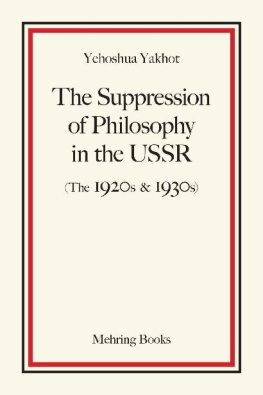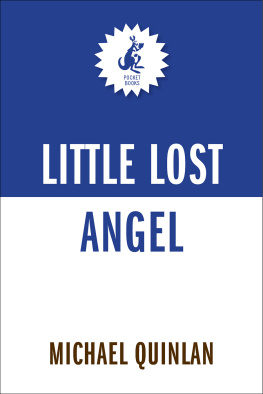
History of British Intelligence
The Secret War between the Wars
MI5 in the 1920s and 1930s
Even though the First World War had ended, the battle against Britains enemies continued unabated during the period of the 1920s and 1930s. Buffeted by political interference and often fighting for their very survival, Britains intelligence services turned to fight a new, clandestine war against rising powers Soviet Russia and Nazi Germany.
Using recently declassified files of the British Security Service (MI5), The Secret War Between the Wars details the operations and tradecraft of British intelligence to thwart Communist revolutionaries, Soviet agents, and Nazi sympathizers during the interwar period. This new study charts the development of British intelligence methods and policies in the early twentieth century and illuminates the fraught path of intelligence leading to the Second World War. An analysis of Britains most riveting interwar espionage cases tells the story of Britains transition between peace and war.
The methods developed by British intelligence in the early twentieth century continue to resonate today. Much like now, the intelligence activity of the British in the pre-Second World War era focused on immediate threats posed by subversive, clandestine networks against a backdrop of shifting great power politics. As Western countries continue to face the challenge of terrorism, and in an era of geopolitical change heralded by the rise of China and the resurgence of Russia, a return to the past may provide context for a better understanding of the future.
History of British Intelligence
ISSN 1756-5685
Series Editor
Peter Martland
With the recent opening of government archives to public scrutiny, it is at last possible to study the vital role that intelligence has played in forming and executing policy in modern history. This new series aims to be the leading forum for work in the area. Proposals are welcomed, and should be sent in the first instance to the publisher at the address below.
Boydell and Brewer Ltd, PO Box 9, Woodbridge, Suffolk IP12 3DF, UK
Previous volumes in this series:
British Spies and Irish Rebels: British Intelligence and Ireland, 19161945 ,
Paul McMahon, 2008
Available in hardback and paperback editions
The Spy Who Came In From the Co-op: Melita Norwood and the Ending of Cold War Espionage , David Burke, 2009
Available in hardback and paperback editions
The Lawn Road Flats: Spies, Writers and Artists , David Burke, 2014
Britannia and the Bear: The Anglo-Russian Intelligence Wars, 19171929 , Victor Madeira, 2014

FOR MY MOTHER AND FATHER
It was his profession, which was that of intelligence officer. It was a profession he enjoyed, and which mercifully provided him with colleagues equally obscure in character and origin. It also provided him with what he had once loved best in life: academic excursions into the mystery of human behaviour, disciplined by the practical application of his own deductions.
John le Carr, Call for the Dead , 1961
Contents
Illustrations
Foreword
Intelligence remains the only profession in which a fictional character (James Bond) remains many times better known than any real practitioner, alive or dead. The tradecraft used by intelligence agencies tends to be thought of as the province of Bond and the spy novelist rather than the serious scholar. References to invisible ink, for example, are vanishingly rare in the many scholarly studies of twentieth-century international relations published by university presses. It was not always thus. Robert Boyle of Boyles Law, one of the key figures in the seventeenth-century scientific revolution and a founder of the Royal Society, invented the term invisible ink and devoted much research to the way reagents make messages written in it confess their secrets. As Professor Kristie Makrakis has argued, the fact that until 2012 the CIA refused to declassify files on the use of invisible ink in the First World War (the oldest classified documents in the US National Archives) is evidence of their continued relevance to intelligence tradecraft. The simplest methods of transmitting secrets are still sometimes the best.
As Kevin Quinlan argues persuasively, The most successful intelligence gathering has depended upon good tradecraft. His path-breaking (and often colourful) analysis of the interwar development of MI5 tradecraft opens up new and important perspectives on counter-espionage, counter-subversion and the British response to Soviet Communism, Italian Fascism and German Nazism. The Secret War between the Wars also has major implications for our understanding of the role of intelligence in both the Second World War and the Cold War. MI5 tradecraft was essential to the success of probably the most effective strategic deception in the history of warfare: the Double-Cross System which fed Hitler and his high command with an unprecedented volume of high-grade disinformation.
Soviet tradecraft also had major successes. The sophistication of the intelligence tradecraft deployed against Moscows wartime allies enabled it to capture probably the single biggest secret in the history of espionage: the plans of the first US atomic bomb, on which the Soviet Union modelled its own. Superior tradecraft also allowed Soviet intelligence to profit from the sometimes woeful lack of security in Western embassies in Moscow. When an FBI expert carried out the first, long overdue, electronic sweep of the US embassy in 1944, he found 120 hidden microphones in the first 24 hours. Thereafter, according to an eye-witness, they kept turning up, in the legs of any new tables or chairs which were delivered, in the plaster of walls, any and everywhere. The major contribution of US and UK intelligence during the Cuban Missile Crisis, the most dangerous point of the Cold War, would have been impossible without much improved Western tradecraft in operations against the Soviet Union.
As well as being a very good read, The Secret War between the Wars makes a powerful case for giving much greater recognition to the role of tradecraft in assessing the past role and influence of intelligence agencies.
Christopher Andrew
Emeritus Professor of Modern and Contemporary History, University of Cambridge
Former Official Historian of the British Security Service (MI5)
Acknowledgements and Disclaimer
This book represents the labour of many people. I would like to thank Professors Peter Hennessey and Keith Jeffery, my doctoral examiners, for their thoughtful commentary on the dissertation underpinning this work, and for being among the first to urge me to turn it into a book. I alone, of course, take responsibility for any errors contained herein, but what follows certainly would have been more flawed without comments and contributions made by Ms Gill Bennett OBE , Mr Hayden Peake and Dr Michael Warner. I would like to thank Michael Middeke, Megan Milan, Rosie Pearce and Boydell & Brewer Press, as well as editor Dr Peter Martland, for their confidence in this project. I also extend thanks to Dr Amy E. Davis for her editorial contributions. During years of research, the staff at the Reading Room of the National Archives made work incomparably easier than it otherwise might have been: Julie Ash and Emily Ward deserve mention. I regularly attended the University of Cambridge Intelligence Seminar from 2004 to 2008, and this book benefitted substantially from insights provided by current and former government officials who spoke in confidence about their experiences. Thanks to all. A special note of gratitude goes to seminar members Dr Johnny Chavkin and Dr Adam Shelley, for their constructive criticism on previous drafts, and to Thomas Giles, Benjamin Hutchinson and Dr Dina Rezk, all of whom provided welcomed diversion and hospitality after long hours of research. I am particularly grateful to Dr Calder Walton for reviewing multiple iterations of this book and acting as a sounding board throughout this project, as well as to his family for looking after me during my time in the UK. This book could not have been written without Professor Christopher Andrew, my supervisor and mentor. My gratitude to you cannot be overstated. Thank you. My deep appreciation goes to my wife, Esha, for her patience and sustenance as this book came to publication. Above all, I would like to thank my sister and especially my parents, whose warm encouragement and support have made it all possible.











